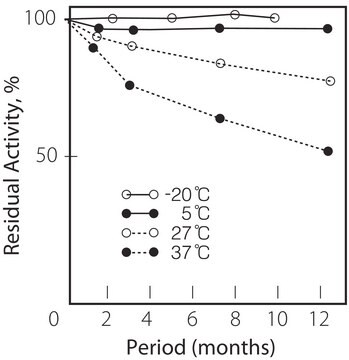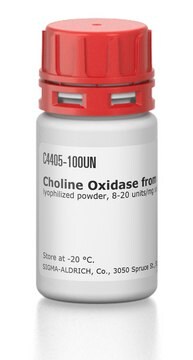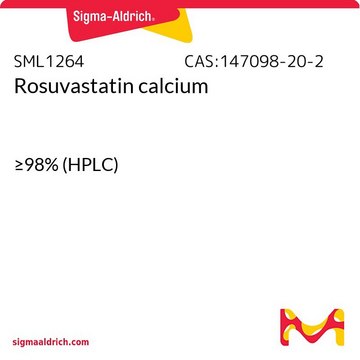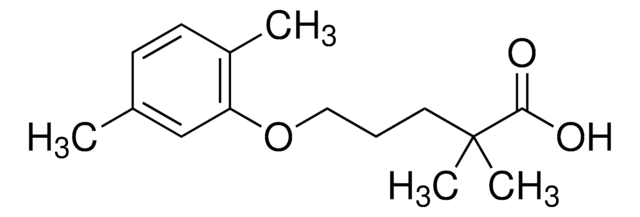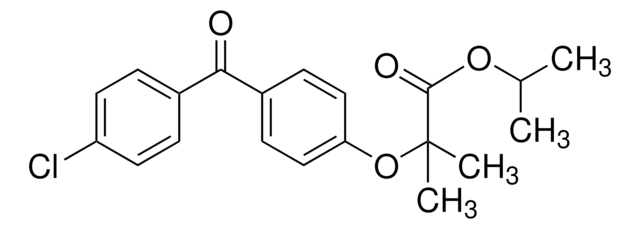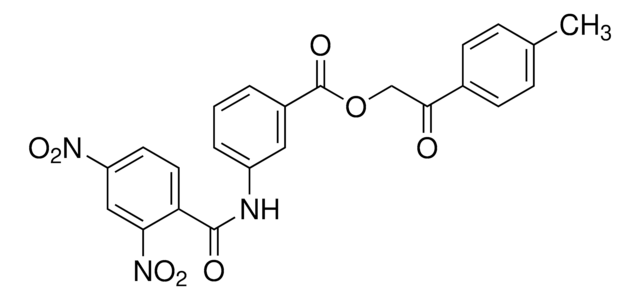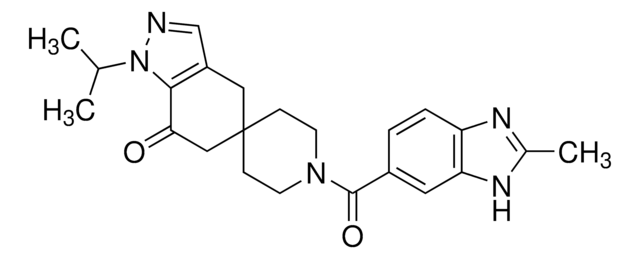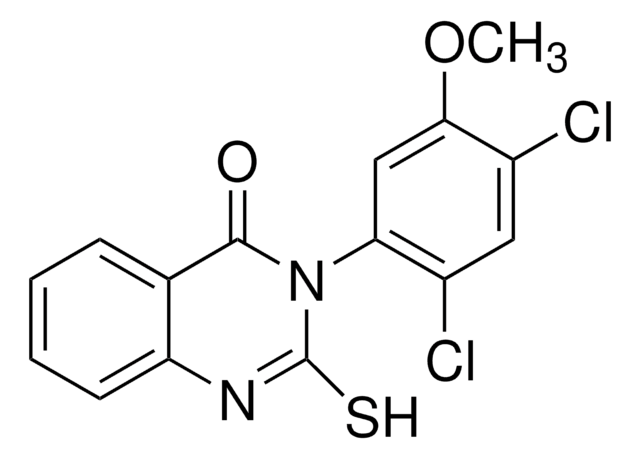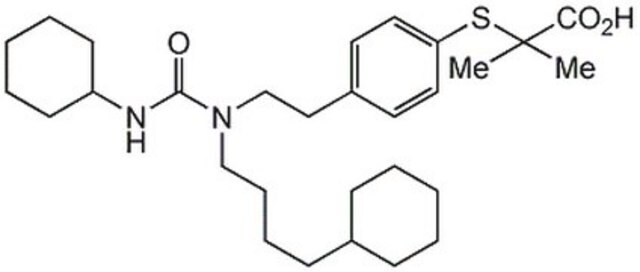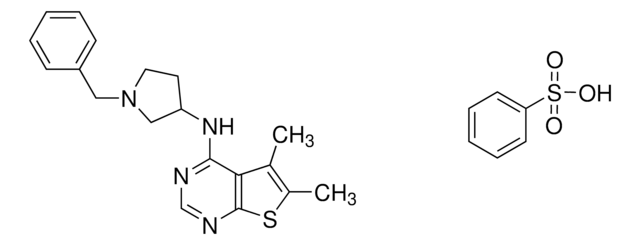C7081
WY-14643
Sinonimo/i:
4-Chloro-6-(2,3-xylidino)-2-pyrimidinylthioacetic acid, Pirinixic acid
About This Item
Prodotti consigliati
Stato
powder
Livello qualitativo
Stringa SMILE
CC1=C(C)C=CC=C1NC2=NC(SCC(O)=O)=NC(Cl)=C2
InChI
1S/C14H14ClN3O2S/c1-8-4-3-5-10(9(8)2)16-12-6-11(15)17-14(18-12)21-7-13(19)20/h3-6H,7H2,1-2H3,(H,19,20)(H,16,17,18)
SZRPDCCEHVWOJX-UHFFFAOYSA-N
Informazioni sul gene
human ... PPARA(5465) , PPARD(5467) , PPARG(5468)
mouse ... Ppara(19013)
rat ... Ppara(25747)
Descrizione generale
Applicazioni
- as a positive control for transfection and luciferase assay
- to stimulate bone marrow–derived macrophages (BMDM) for autophagic flux analysis
- to analyze the regulation of fatty acid metabolism-immune nexus (FAMIN) expression in cell culture
Azioni biochim/fisiol
Caratteristiche e vantaggi
Avvertenze
Danger
Indicazioni di pericolo
Consigli di prudenza
Classi di pericolo
Acute Tox. 4 Oral - Carc. 1B - Eye Irrit. 2 - Skin Irrit. 2 - STOT SE 3
Organi bersaglio
Respiratory system
Codice della classe di stoccaggio
6.1C - Combustible acute toxic Cat.3 / toxic compounds or compounds which causing chronic effects
Classe di pericolosità dell'acqua (WGK)
WGK 3
Punto d’infiammabilità (°F)
Not applicable
Punto d’infiammabilità (°C)
Not applicable
Dispositivi di protezione individuale
Eyeshields, Gloves, type P3 (EN 143) respirator cartridges
Scegli una delle versioni più recenti:
Possiedi già questo prodotto?
I documenti relativi ai prodotti acquistati recentemente sono disponibili nell’Archivio dei documenti.
I clienti hanno visto anche
Il team dei nostri ricercatori vanta grande esperienza in tutte le aree della ricerca quali Life Science, scienza dei materiali, sintesi chimica, cromatografia, discipline analitiche, ecc..
Contatta l'Assistenza Tecnica.